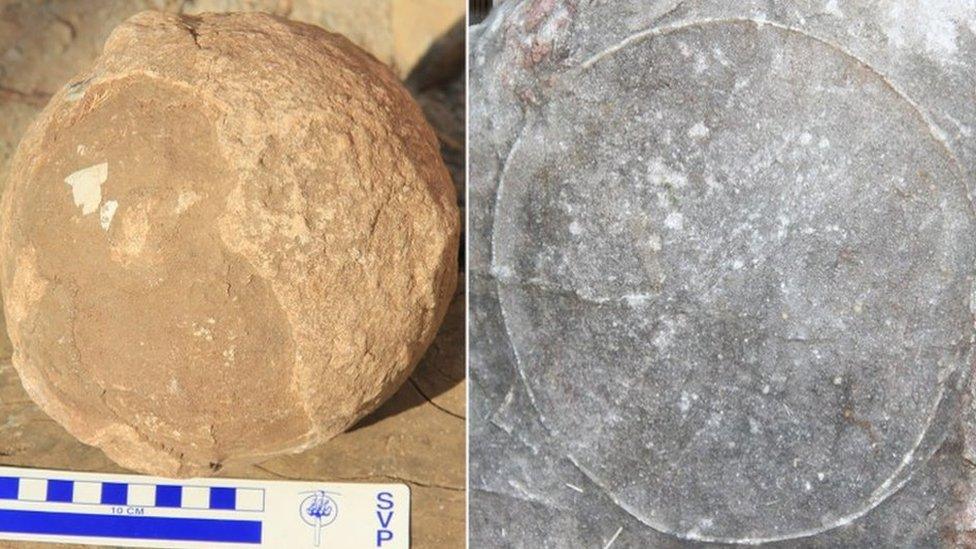Dinosaur eggs of the world's largest dinosaur discovered
- Published
- comments

More than 250 fossilised titanosaur eggs have been found in India, suggesting there could be more types of the large dinosaur in the country than previously thought.
Six different types of fossilised eggs were found across the Lameta Formation in central India.
According to the study published in the journal Plos One they date to the Late Cretaceous period, 100 million to 66 million years ago.
It is thought they were covered in lava from volcanic eruptions which preserved the eggs.
Experts believe that the eggs show there could have been more types of dinosaur living in India than the three types they currently know about.
Groups of nests
Photograph showing tightly grouped eggs
The researchers dug up 92 nests across the Dhar district in central India.
The nests were close together which suggests the groups of dinosaurs laid their eggs close together.
Experts at the Natural History Museum in London say there is also evidence that the parents didn't stick around to look after their eggs.
"While there are fossils of some dinosaurs... where parents are preserved sitting on a nest, there is no evidence of that kind of behaviour in the sauropods," said Dr Susannah Maidment, a Principal Researcher and Curator of Dinosaurs at the Museum.
"It looks like sauropods laid their eggs and then left their offspring to fend for themselves."
An egg inside an egg
The fossil showing two egg shells
One of the fossils found appeared to show an eggshell inside an egg.
Experts believe it could be the first example of this phenomenon called a ovum-in-ovo egg in dinosaurs and even reptiles.
Currently this is seen in birds and is often caused by stressful conditions.
